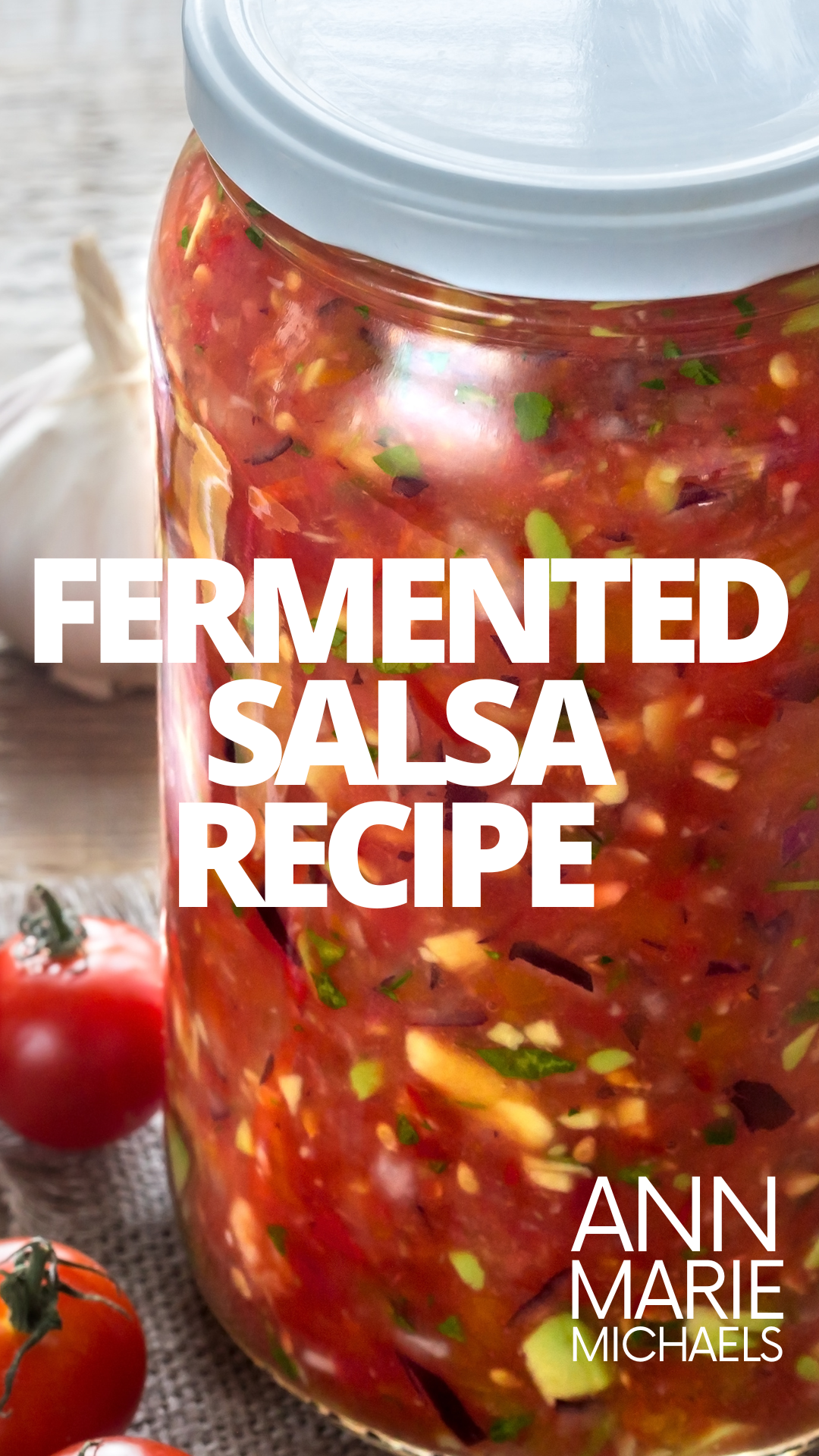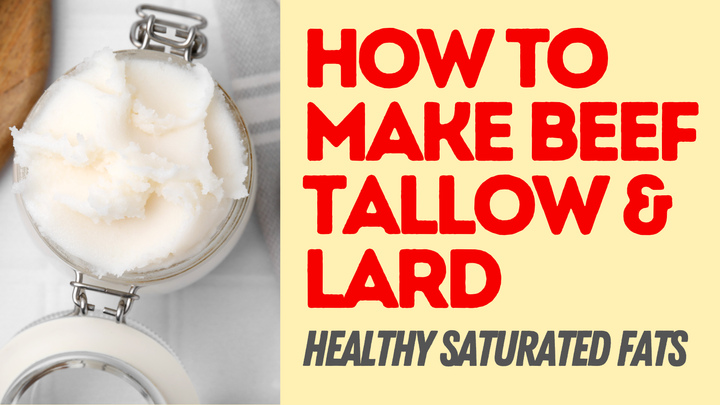Fermented Salsa
This isn’t just any old salsa. This is fermented salsa.

If you’re like me, you love salsa. It’s true, I grew up in Texas. But salsa isn’t just for Texans anymore. Salsa is the number one condiment in America (mustard is number two). This isn’t just any old salsa. This is fermented salsa.
Why Make Fermented Salsa?
What’s fermented salsa, you ask, and why should we make it? Fermented salsa is probiotic. Like yogurt or kefir.
So it helps to populate the good bacteria in your gut.With all the assaults we have on our gut flora — from antibiotics to the birth control pill to chlorinated water — we need more probiotics.
Oh, and did I mention that because this salsa is fermented, it will keep in the fridge for weeks and even months on end?
Note: This recipe was originally published on my blog in 2010. I am in the process of cleaning up all my old recipes and republishing them. Please click the red subscribe button below to get email updates whenever I publish.
Recipe Notes
If you are using fresh chile peppers, consider wearing rubber gloves, especially if you are sensitive to the capsaicin, the stuff in peppers that makes them hot. If you don't use gloves, be sure to wash your hands very well with soap after you're done – otherwise, you could end up getting it in your eyes which is not fun.
I love the taste of fresh tomatoes, particularly if they are homegrown, but if you only have canned tomatoes it will still be good.
If you prefer to make this in a food processor, you can.
My recipe for whey is here. If you are dairy-intolerant or don't have any homemade whey on hand, you can just skip the whey and use extra salt, as the recipe indicates.
If you don't like cilantro, you can leave it out. You can also experiment with different ingredients such as different types of chile peppers, mango, corn, etc. There are lots of variations once you learn the basic recipe.
Fermented Salsa Recipe
Equipment
Rubber gloves
Quart-sized mason jar with lid
Optional: Food processor
Ingredients
Serrano peppers (1-2 ) or jalapeño pepper 1/2 to 1 pepper – use less and add more, to taste, depending on how spicy you like it
Tomatoes, fresh, medium (4) or canned tomatoes (2 pounds) – organic if possible
Onion, medium, white or red (1) – organic if possible
Garlic clove (1)
Limes (2) – or 1 lemon if you don't have limes
Sea salt (1 tablespoon)
Optional: Whey (4 tablespoons) – if you don't have it, use an additional 1 tablespoon salt
Optional: Cilantro, fresh (1 bunch)
Optional: Filtered or spring water
Directions
- Wearing gloves, cut open the chiles and discard the stems and seeds. Set aside.
- Chop peppers finely and add to a mixing bowl.
- If using fresh tomatoes, peel and de-seed them by parboiling: Fill a large saucepan halfway with water, set on high heat and bring to a boil. Cut an X in the bottom (blossom end) of the tomato, and carefully set them in the saucepan for 5-10 seconds, then remove with a slotted spoon or tongs and place in an ice bath. Cool and peel.
- Cut tomatoes in half and gently squeeze out the seeds, or scoop out with a spoon, and discard.
- Chop tomatoes finely and add to mixing bowl.
- Peel and cut the onion into small dice. Add to bowl.
- Peel and mince or crush the garlic. Add to bowl.
- Rinse, dry and chop the optional cilantro, discarding the stems. Add to bowl.
- Squeeze the limes (or lemon) and add the juice to the bowl.
- Add the sea salt and (optional) whey.
- Stir and transfer to quart-sized mason jar.
- Add a little filtered or spring water if necessary (if you like it more liquid and it’s too chunky). Make sure to leave at least an inch of space from the top of the jar.
- Cover and keep at room temperature for 2-3 days before transferring to the fridge. Salsa will keep for weeks or months in fridge.
Pin This Post: Fermented Salsa




Comments ()